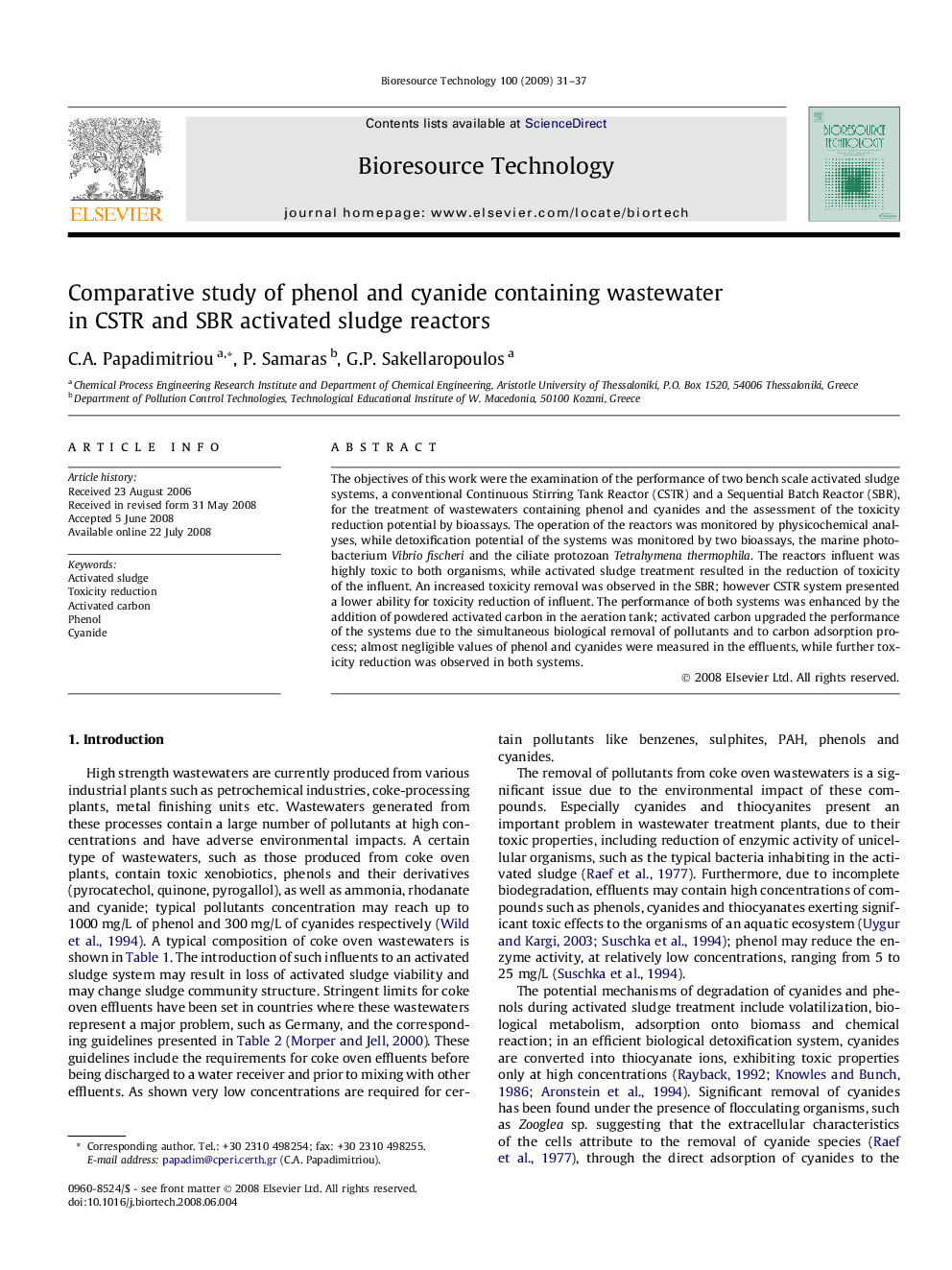| Article ID | Journal | Published Year | Pages | File Type |
|---|---|---|---|---|
| 684220 | Bioresource Technology | 2009 | 7 Pages |
The objectives of this work were the examination of the performance of two bench scale activated sludge systems, a conventional Continuous Stirring Tank Reactor (CSTR) and a Sequential Batch Reactor (SBR), for the treatment of wastewaters containing phenol and cyanides and the assessment of the toxicity reduction potential by bioassays. The operation of the reactors was monitored by physicochemical analyses, while detoxification potential of the systems was monitored by two bioassays, the marine photobacterium Vibrio fischeri and the ciliate protozoan Tetrahymena thermophila. The reactors influent was highly toxic to both organisms, while activated sludge treatment resulted in the reduction of toxicity of the influent. An increased toxicity removal was observed in the SBR; however CSTR system presented a lower ability for toxicity reduction of influent. The performance of both systems was enhanced by the addition of powdered activated carbon in the aeration tank; activated carbon upgraded the performance of the systems due to the simultaneous biological removal of pollutants and to carbon adsorption process; almost negligible values of phenol and cyanides were measured in the effluents, while further toxicity reduction was observed in both systems.
